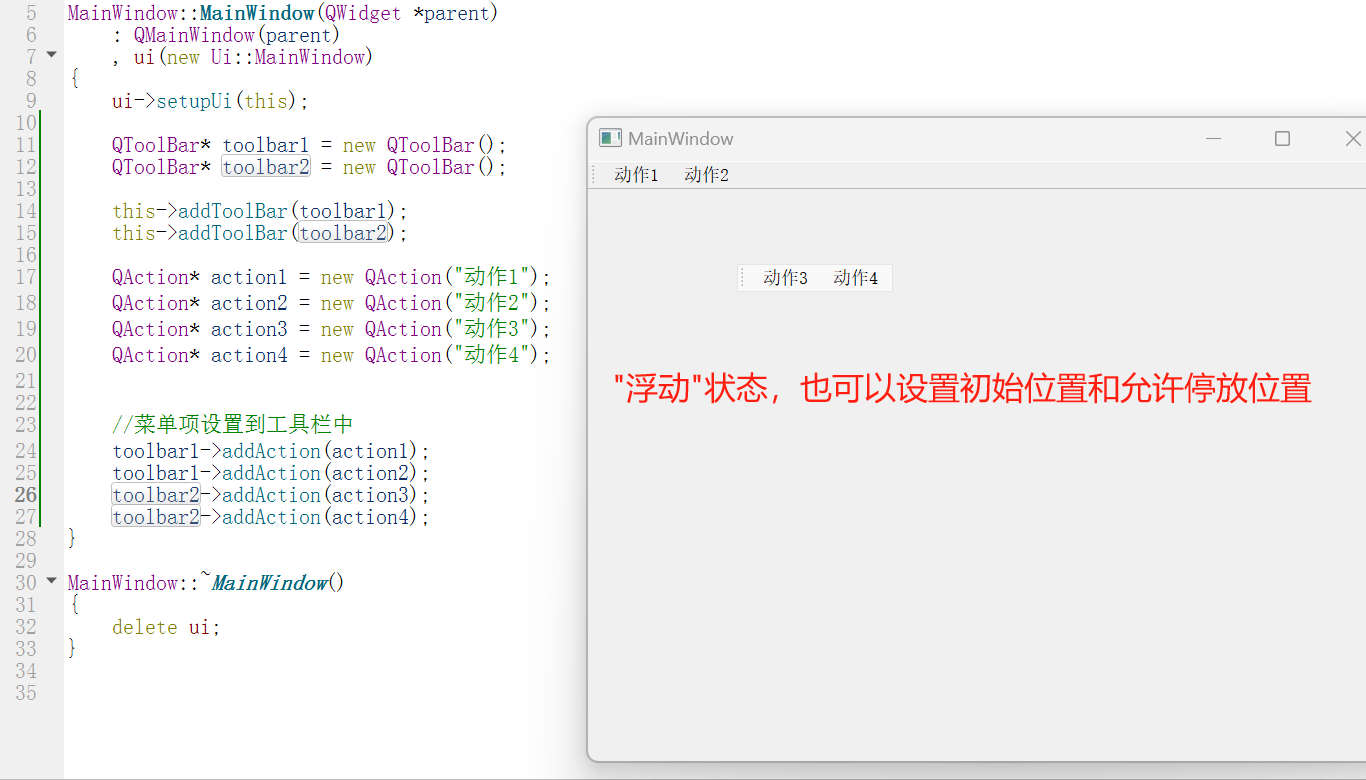栈的概念及结构
栈:一种特殊的线性表,其只允许在固定的一端进行插入和删除元素操作。进行数据插入和删除操作的一端
称为栈顶,另一端称为栈底。栈中的数据元素遵守后进先出LIFO(Last In First Out)的原则。
压栈:栈的插入操作叫做进栈/压栈/入栈,入数据在栈顶。
出栈:栈的删除操作叫做出栈。出数据也在栈顶。

栈的定义
typedef int STDataType;
typedef struct Stack
{
STDataType* _a;//数组
int _top; // 栈顶,类似顺序表中的_size
int _capacity; // 容量
}Stack;对栈的操作
栈初始化
_top可以初始化为0,此时栈顶元素是_top-1的位置
_top也可以初始化为1,此时栈顶元素就是_top的位置
 初始化为0
初始化为0
 初始化为1
初始化为1
// 初始化栈
void StackInit(Stack* ps)
{
assert(ps);
ps->_a = NULL;
ps->_capacity = 0;
ps->_top = 0;
}压栈(入栈)
// 入栈
void StackPush(Stack* ps, STDataType data)
{
assert(ps);
//扩容
if (ps->_capacity == ps->_top)
{
int newcapacity = ps->_capacity == 0 ? 4 : 2 * (ps->_capacity);
STDataType* tmp = (STDataType*)realloc(ps->_a, newcapacity * sizeof(STDataType));
if (tmp == NULL)
{
perror("realloc fail");
return;
}
ps->_a = tmp;
ps->_capacity = newcapacity;
}
ps->_a[ps->_top++] = data;
}出栈
void StackPop(Stack* ps)
{
assert(ps);
assert(!StackEmpty(ps));
ps->_top--;
}取栈顶元素
STDataType StackTop(Stack* ps)
{
assert(ps);
return ps->_a[ps->_top-1];
}判断栈是否为空
bool StackEmpty(Stack* ps)
{
assert(ps);
return ps->_top == 0;
}栈的长度
_top初始化为0,此时的_top的大小刚好就是栈的长度
int StackSize(Stack* ps)
{
assert(ps);
return ps->_top;
}栈销毁
void StackDestroy(Stack* ps)
{
assert(ps);
ps->_capacity = ps->_top = 0;
free(ps->_a);
ps->_a = NULL;
}完整总代码
头文件
#pragma once
#include<stdio.h>
#include<assert.h>
#include<stdlib.h>
#include<stdbool.h>
// 支持动态增长的栈
typedef int STDataType;
typedef struct Stack
{
STDataType* _a;//数组
int _top; // 栈顶,类似顺序表中的_size
int _capacity; // 容量
}Stack;
// 初始化栈
void StackInit(Stack* ps);
// 入栈
void StackPush(Stack* ps, STDataType data);
// 出栈
void StackPop(Stack* ps);
// 获取栈顶元素
STDataType StackTop(Stack* ps);
// 获取栈中有效元素个数
int StackSize(Stack* ps);
// 检测栈是否为空,如果为空返回非零结果,如果不为空返回0
bool StackEmpty(Stack* ps);
// 销毁栈
void StackDestroy(Stack* ps);
函数定义
#include"Stack.h"
// 初始化栈
void StackInit(Stack* ps)
{
assert(ps);
ps->_a = NULL;
ps->_capacity = 0;
ps->_top = 0;
}
// 入栈
void StackPush(Stack* ps, STDataType data)
{
assert(ps);
//扩容
if (ps->_capacity == ps->_top)
{
int newcapacity = ps->_capacity == 0 ? 4 : 2 * (ps->_capacity);
STDataType* tmp = (STDataType*)realloc(ps->_a, newcapacity * sizeof(STDataType));
if (tmp == NULL)
{
perror("realloc fail");
return;
}
ps->_a = tmp;
ps->_capacity = newcapacity;
}
ps->_a[ps->_top++] = data;
}
// 出栈
void StackPop(Stack* ps)
{
assert(ps);
assert(!StackEmpty(ps));
ps->_top--;
}
// 获取栈顶元素
STDataType StackTop(Stack* ps)
{
assert(ps);
return ps->_a[ps->_top-1];
}
// 获取栈中有效元素个数
int StackSize(Stack* ps)
{
assert(ps);
return ps->_top;
}
// 检测栈是否为空,如果为空返回非零结果,如果不为空返回0
bool StackEmpty(Stack* ps)
{
assert(ps);
return ps->_top == 0;
}
// 销毁栈
void StackDestroy(Stack* ps)
{
assert(ps);
ps->_capacity = ps->_top = 0;
free(ps->_a);
ps->_a = NULL;
}测试
#include"Stack.h"
void test()
{
Stack s;
StackInit(&s);
StackPush(&s, 1);
StackPush(&s, 2);
StackPush(&s, 3);
StackPush(&s, 4);
while (StackSize(&s)>0)
{
printf("%d ", StackTop(&s));
StackPop(&s);
}
StackDestroy(&s);
}
int main()
{
test();
return 0;
}
欢迎各位一起学习交流~



















